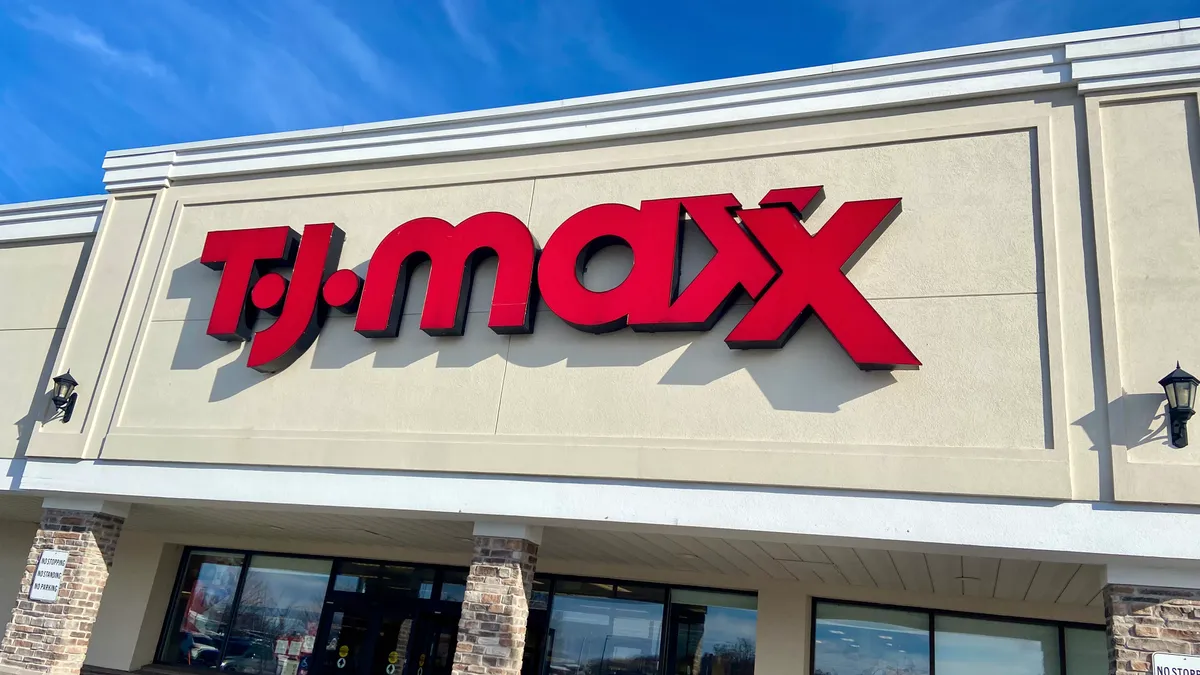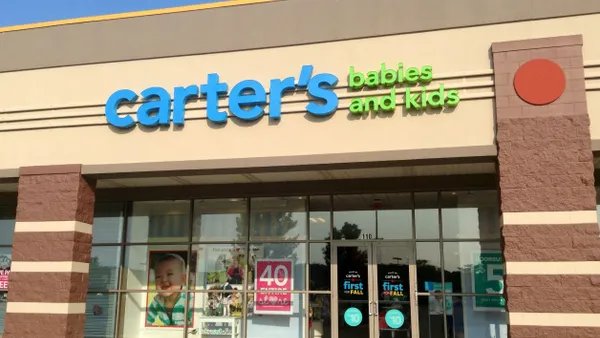Dive Brief:
-
In a slight topline miss, TJX on Wednesday said its net sales grew 3.3% year over year to $11.8 billion. U.S. Marmaxx net sales, which includes T.J. Maxx, Marshalls and Sierra stores, rose 7.2%, while U.S. HomeGoods sales fell 3.4%.
-
Store comps at Marmaxx rose 5% year over year, while comps at HomeGoods fell 7%. Overall company comps rose 3%, per a company press release.
-
Margins were more robust, in part thanks to lower freight costs. Pretax profit margin rose to 10.3%, from 7.5%; gross margin expanded by 1 percentage point, and merchandise margin was up. Net income rose 51.8% to $891 million.
Dive Insight:
Already a leader in off-price thanks to its price flexibility and ability to garner a range of good merchandise, TJX may be pulling further ahead.
“We continue to believe this is the year that TJX will set itself apart from Off-Price peers, showing that beyond offering value to customers, it is becoming increasingly important to the brands,” BMO Capital Markets Managing Director Simeon Siegel said in emailed comments.
So far this year, footfall to the company’s major U.S. banners T.J. Maxx and Marshalls has consistently outpaced not just apparel stores overall but also rivals Ross and Burlington, according to a May 15 report from traffic analytics firm Placer.ai. In a statement Tuesday, TJX CEO Ernie Herrman said the company’s Q1 comp growth stemmed from increased traffic, especially to its U.S. Marmaxx stores.
The TJX retailers offer a “strong assortment of more dressy styles for work, occasions, and travel — all of which are firmly on the consumer radar at this time,” GlobalData Managing Director Neil Saunders said in emailed comments.
“This gives it an advantage over rivals like Ross, which skews a bit more casual, and over Nordstrom Rack, which is currently all over the place when it comes to ranging,” he said. “The division also benefits from shoppers who are more financially robust than some other off-price players, which means there is more willingness and a greater ability to buy on impulse.”
Economic uncertainty and inflation are sending consumers to look for deals, and off price in general is benefiting, even though mainstream apparel retailers have become more promotional, Saunders also said.
The company’s HomeGoods unit didn’t fare as well as Marmaxx, in part because the segment is still coming down from its pandemic-related boom and because its merchandise mix “can get monotonous,” he said. Still, he and other analysts believe the banner could take market share from the demise of Bed Bath & Beyond.
In general, there are signs that the availability of top-notch merchandise is ebbing, according to William Blair analysts. Still, Herrman said the second quarter “is off to a good start” and the company continues to enjoy “phenomenal” buying opportunities, setting it up to take yet more share, enjoy strong traffic and boost profits further.
“Our view is that while metrics may soften a little over the rest of this year, TJX will continue to outperform,” Saunders said.













